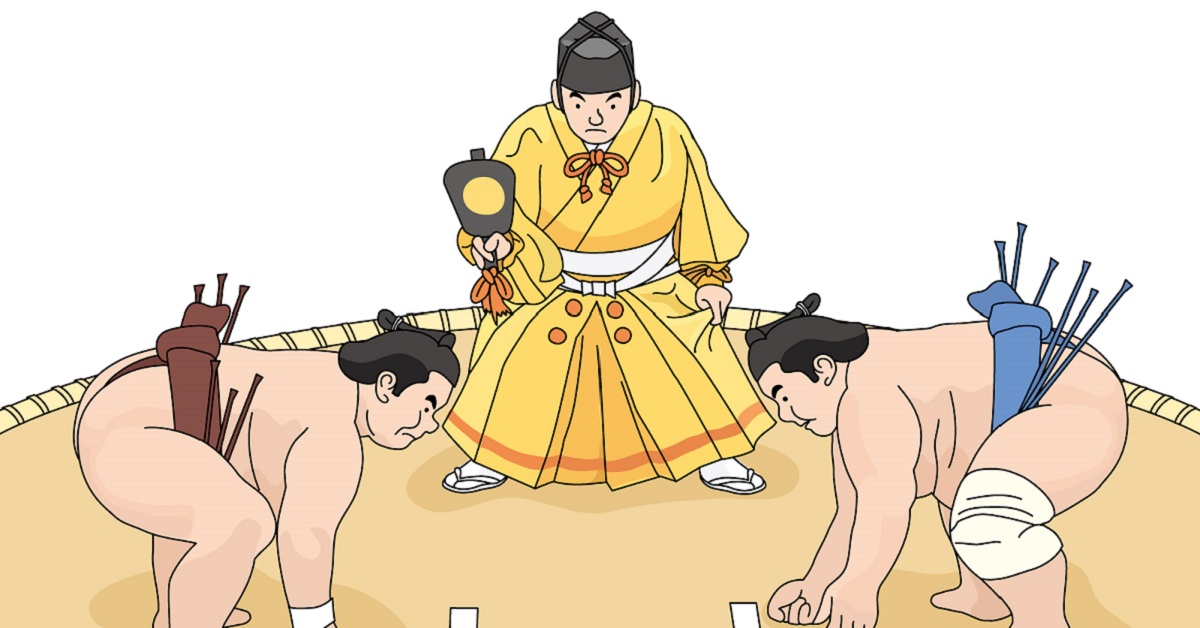You may have heard the shouts “Hakkiyoi” and “Nokotta” echoing across the sumo ring. These are not just traditional words—they are vital parts of sumo’s atmosphere, signaling momentum, encouragement, and the flow of combat. In this article, we’ll uncover their meaning, origin, and spiritual role, making it easier for new fans and international viewers to fully enjoy the sumo experience.
What Are “Hakkiyoi” and “Nokotta”?
Traditional Shouts During a Sumo Match
In sumo, the referee, or gyoji, shouts unique phrases during a bout. The most famous are “Hakkiyoi” and “Nokotta”. These aren’t just for effect—they communicate the current state of the match and keep the atmosphere intense.
- “Hakkiyoi” = The wrestlers are still in action
- “Nokotta” = Neither wrestler has lost yet
These calls help spectators and judges follow the bout clearly.
| Call | Meaning |
|---|---|
| Hakkiyoi | Urging the wrestlers to continue fighting |
| Nokotta | Signifying that the match is still ongoing |
Thanks to these calls, viewers can feel the intensity of the match through sound as well as sight.
The Meaning and Origin of “Hakkiyoi”
A Powerful Word Derived from “Hakki Youyou”
The word “Hakkiyoi” is believed to originate from the phrase “Hakki Youyou”, which means “to rouse one’s spirit and stay lively.”
- “Hakki” means releasing energy
- “Youyou” suggests being cheerful or full of spirit
Thus, “Hakkiyoi” is a shout of encouragement, urging wrestlers to show strength and spirit. It’s typically used when a bout slows down, helping refocus both wrestlers and the crowd. Even non-Japanese spectators feel the energy embedded in the sound, making it a vital part of the sumo experience.
| Term | Interpretation |
|---|---|
| Hakki (発気) | To rouse one’s spirit |
| Youyou (揚々) | Lively, energetic mood |
The Meaning and Usage of “Nokotta”
A Shout That Emphasizes a Match Still in Progress
“Nokotta” is shouted when neither wrestler has yet lost. In sumo, a loss occurs when a wrestler steps out of the ring or touches the ground with anything other than their feet.
Thus, “Nokotta” signals that both are still battling, and the fight continues. It also praises the wrestlers’ perseverance, reflecting Japanese cultural values.
| Situation | Purpose of the Call |
|---|---|
| Push battle at center | Indicating the match is ongoing |
| Edge of ring standoff | Highlighting strong resistance |
| Slowing action | Reminding wrestlers to stay focused |
“Nokotta” enhances the drama and tension, making every second of the match more compelling for viewers and motivating for the wrestlers.
The Role of the Gyoji and Their Calls
More Than a Referee—They Shape the Atmosphere
The gyoji doesn’t just judge the match; they help control its rhythm with their calls. Timing, tone, and volume all require skill. Their shouts are key to maintaining the energy and ceremony of sumo. Here are their ranks and duties:
| Rank | Responsibilities |
|---|---|
| Tate Gyoji | Top-ranked, oversees yokozuna matches |
| San’yaku Gyoji | Referees matches of top-ranked wrestlers |
| Makuuchi Gyoji | Handles upper-division matches |
| Juryo Gyoji | Oversees second division |
| Lower Rank Gyoji | Manages preliminary matches |
Each gyoji has unique clothing and a distinct style of shouting, reflecting their rank. The voice of a gyoji is part of the performance, enriching the tradition of sumo.
Why Are These Calls Left Untranslated?
The Sound Itself Communicates Culture
“Hakkiyoi” and “Nokotta” are used as-is around the world, even in English broadcasts. That’s because their sound conveys meaning beyond words.
- “Hakkiyoi” is rhythmic and powerful
- “Nokotta” adds to the suspense with sharp repetition
Different viewers interpret the calls intuitively:
| Audience | Perception of the Call |
|---|---|
| Japanese | Understands both meaning and tradition |
| Foreign Visitors | Feel the emotion through the sound |
| Beginners | Learn context through the match dynamics |
Translation would dilute their impact. These expressions reflect Japan’s aesthetic and respectful communication, earning admiration worldwide.
The Spiritual Meaning Behind Sumo Calls
The Philosophy of “Sumo-do” in a Single Voice
The shouts of sumo express more than commands—they embody spirit. Sumo is deeply connected with Shinto rituals, and the ring is treated as sacred. Even calls like “Hakkiyoi” and “Nokotta” reflect the wrestlers’ spirit, dignity, and perseverance.
| Spiritual Value | Expression in Calls |
|---|---|
| Courage | “Hakkiyoi” urges warriors to rise |
| Respect | Shown in the gyoji’s poised voice |
| Endurance | “Nokotta” praises grit and resistance |
| Unity | Builds a shared energy among all present |
These shouts are a vocal embodiment of sumo’s spirit. Understanding their meaning lets viewers appreciate sumo not just as sport, but as a cultural art form.
Conclusion
“Hakkiyoi” and “Nokotta” are more than traditional expressions—they are symbols of the soul of sumo. They express the gyoji’s intent, the wrestlers’ determination, and the unity of the match atmosphere.
As you watch sumo, try to listen closely to these calls. They are not random shouts, but essential pieces of sumo’s rich tradition. Understanding their meaning will deepen your appreciation of each match and the culture it represents.
Sumo is more than physical contests—it is a spiritual, cultural, and aesthetic ritual. And at the center of that ritual is the power of voice.





コメント